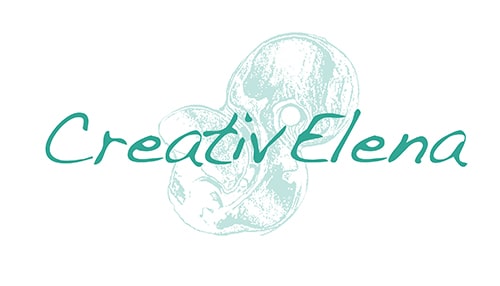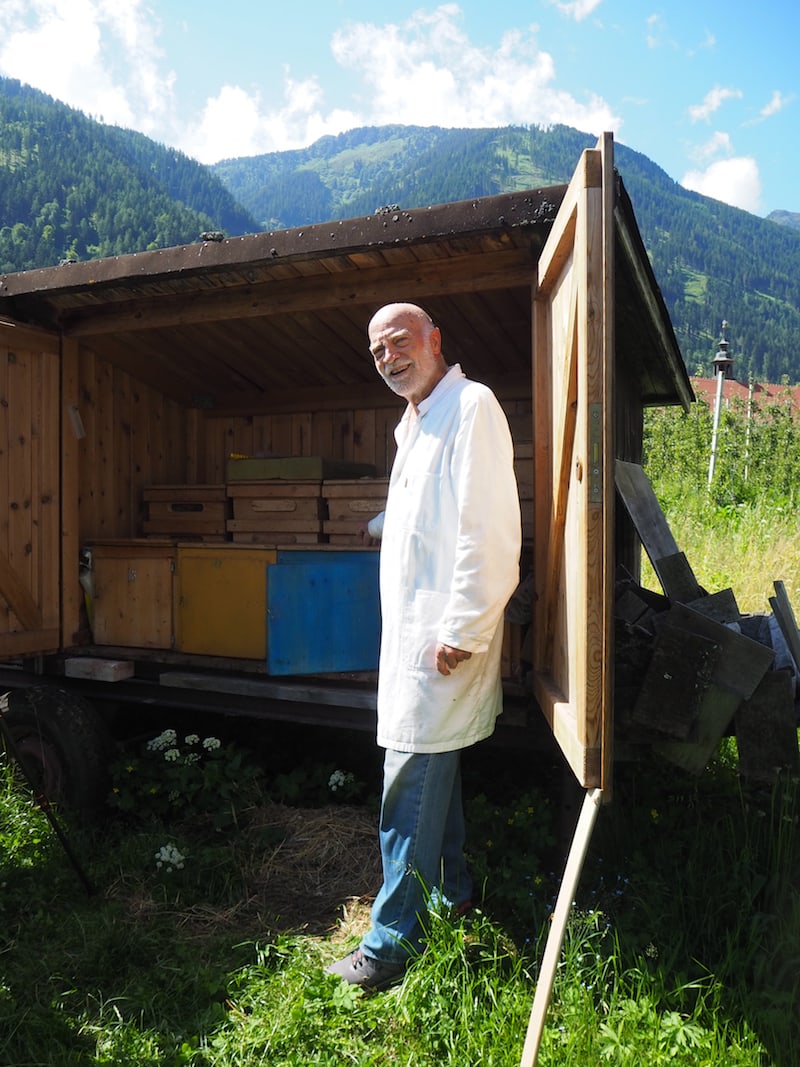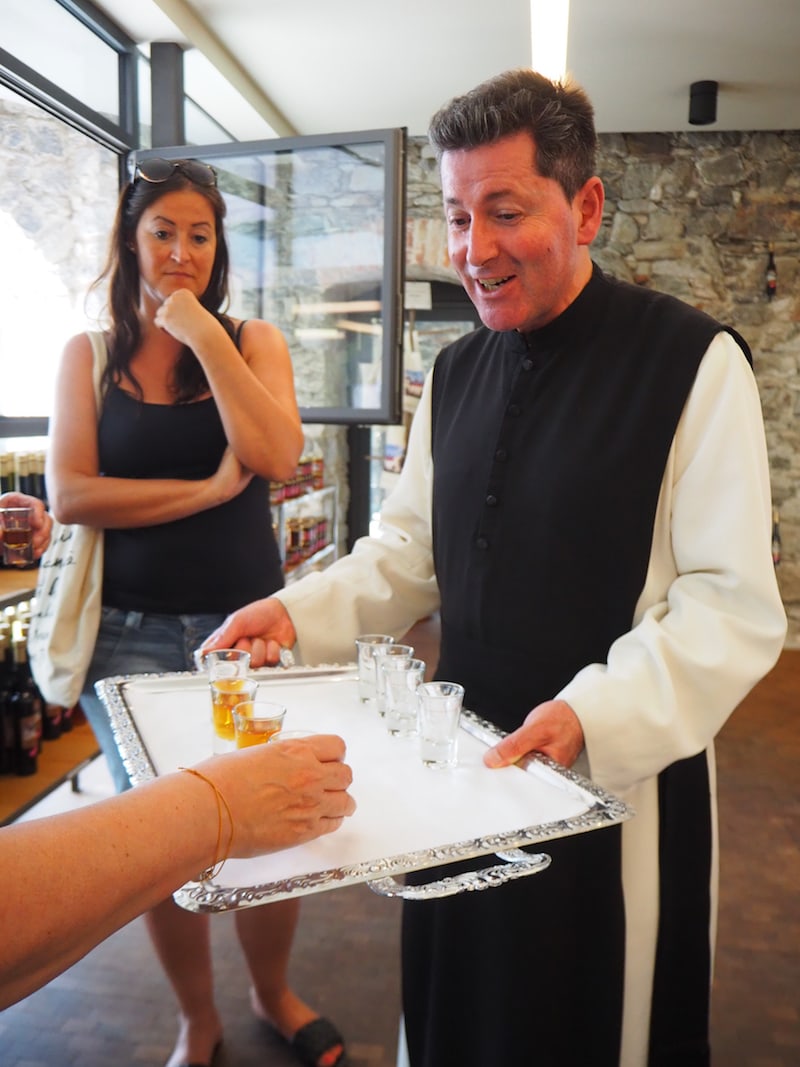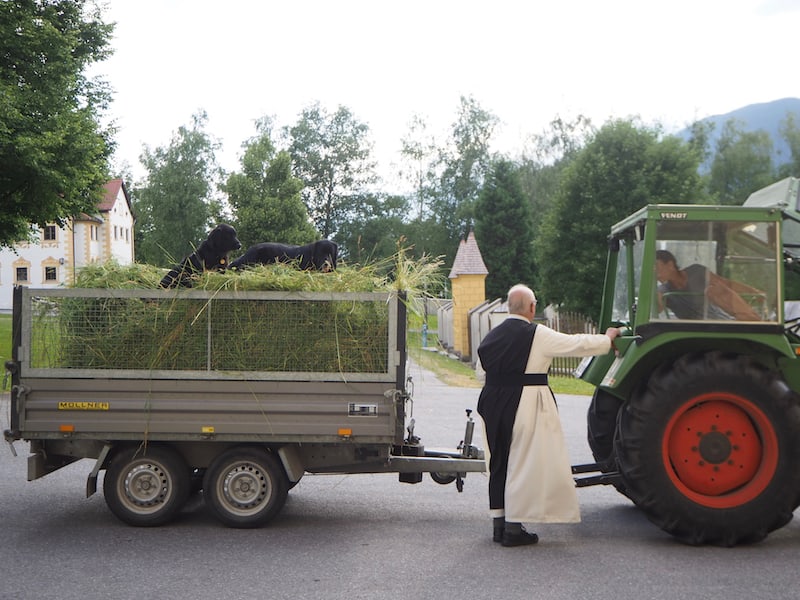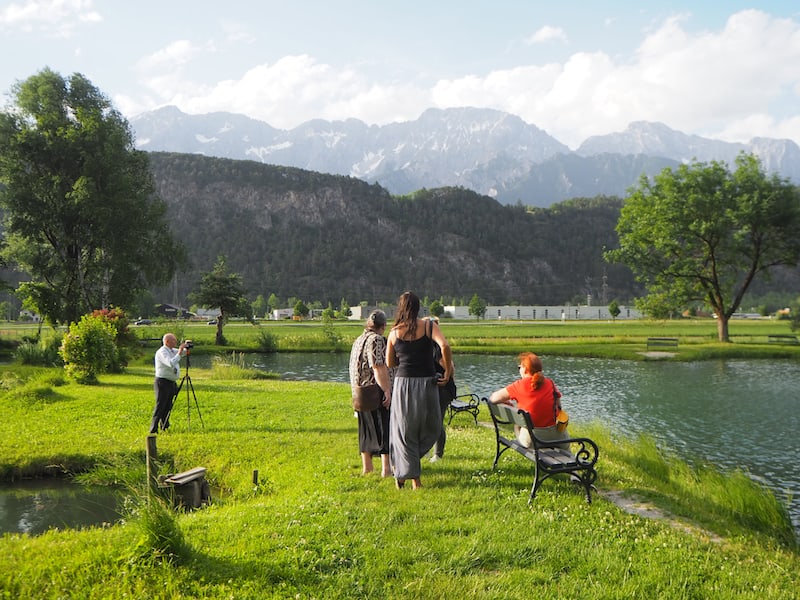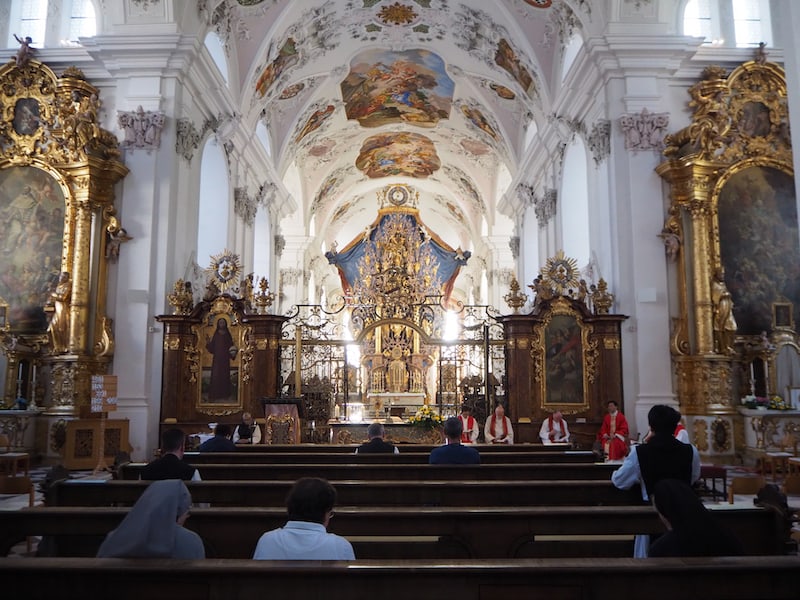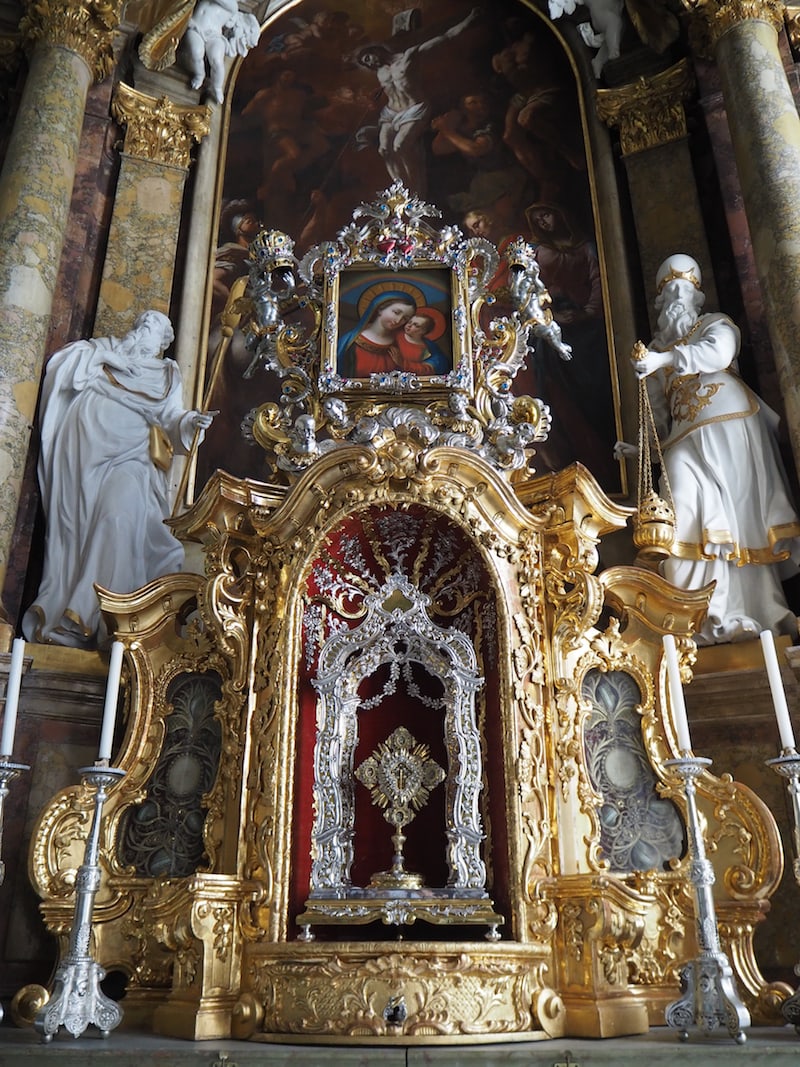“Monastery life has a lot to do with freedom.” This message given by Frater Lukas Agerer at Stams Abbey in Tyrol rings in my ears for quite some time. It seems so contrary to the general belief that monastery life is characterised by rigour, rules and very little freedom. And yet I’ve come to understand what he means. What he refers to, of course, is inner freedom. To be able to live the very life that is intended for you. Inner freedom, and peace, is something that Frater Lukas has plenty of. I love the decelerating effect this has on all of us visiting him at Stams Abbey.
For two days, we get to know and follow him around Stams Abbey. He tells us all there is to know about the enormous abbey complex, which has grown and developed over many centuries. As guests of the abbey, it is possible to spend the night here and even participate in the meals of the Cistercian monks.
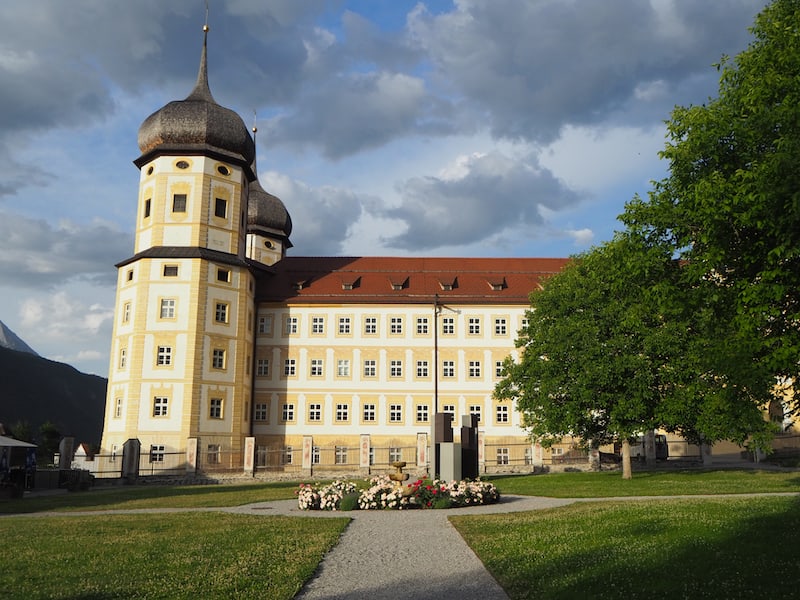
Stams Abbey is a remarkable, architectural highlight which you can’t miss driving through the Inntal valley in Tyrol.
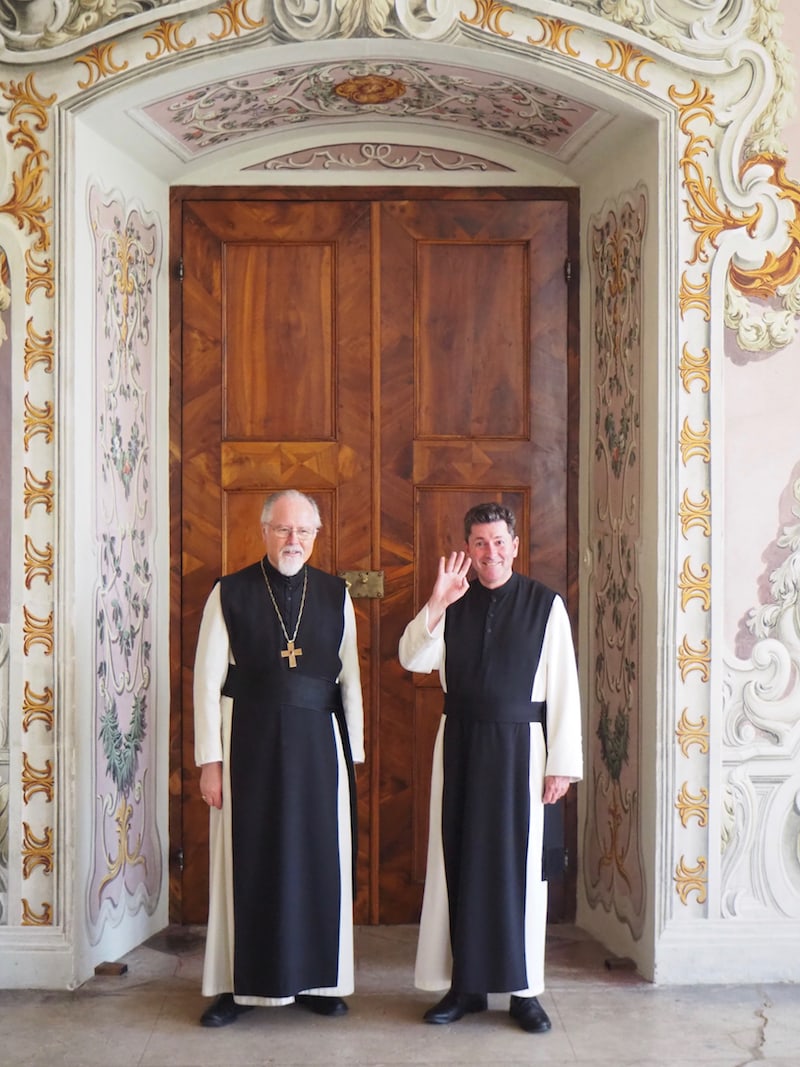
Here, we are welcomed by Frater Lukas (on the right) and abbot German Erd, who lead us around the mighty abbey complex and also share their personal histories of becoming monks (and abbot) with us.
As guests at Stams Abbey, our rooms are located within the enclosure of the Cistercian monks!
This is a very unusual fact about staying at Stams Abbey. The monastic enclosure is, as the name suggests, a closed-off area reserved for the monks of the respective community. Stams Abbey is different. Our guest rooms are opposite or in the middle of the monks’ rooms. Pilgrims, guests, even the abbot himself all spend the night here together along one wing. Other than being urged to be quiet at night – as the very atmosphere of the hall and rooms command – the community of Cistercian monks don’t seem to mind us right among their ranks at all. Check this out.
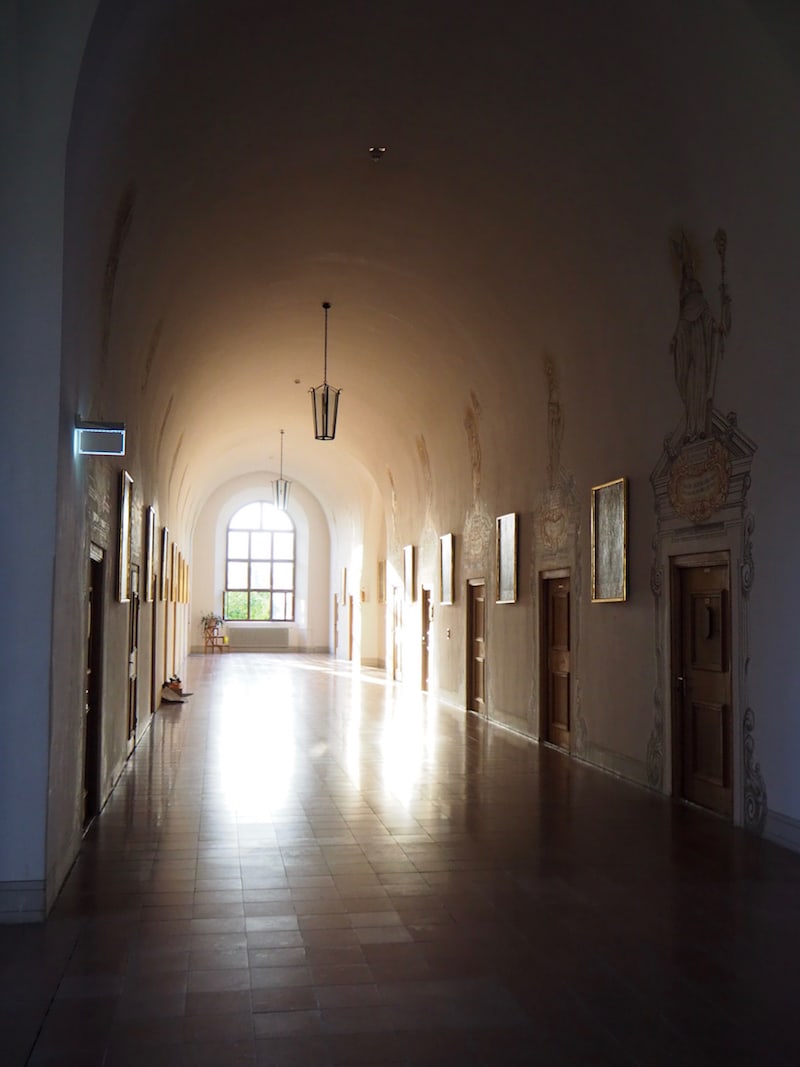
A view into the enclosure, which has doors leading to guest rooms as well as doors leading to the monks who live here.
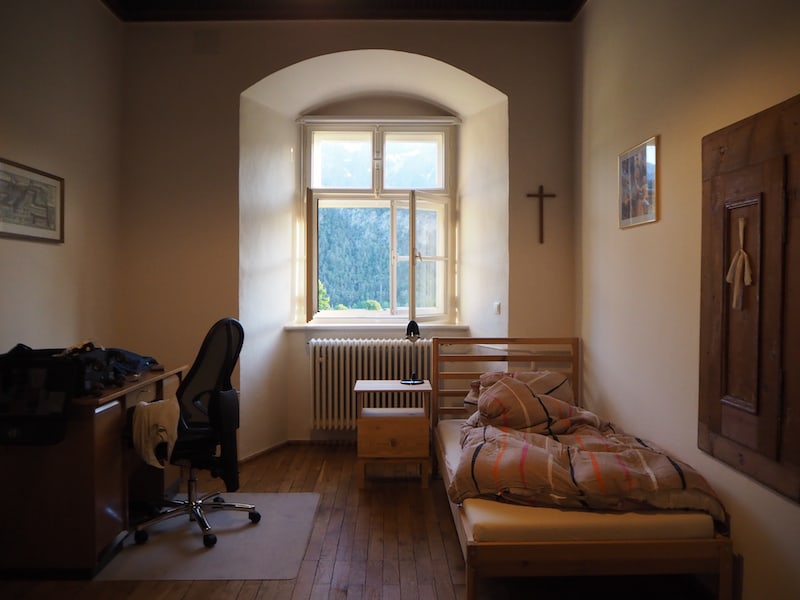
This is the view into my guest room. On the left, there is a large cupboard as well as a small ensuite bathroom.
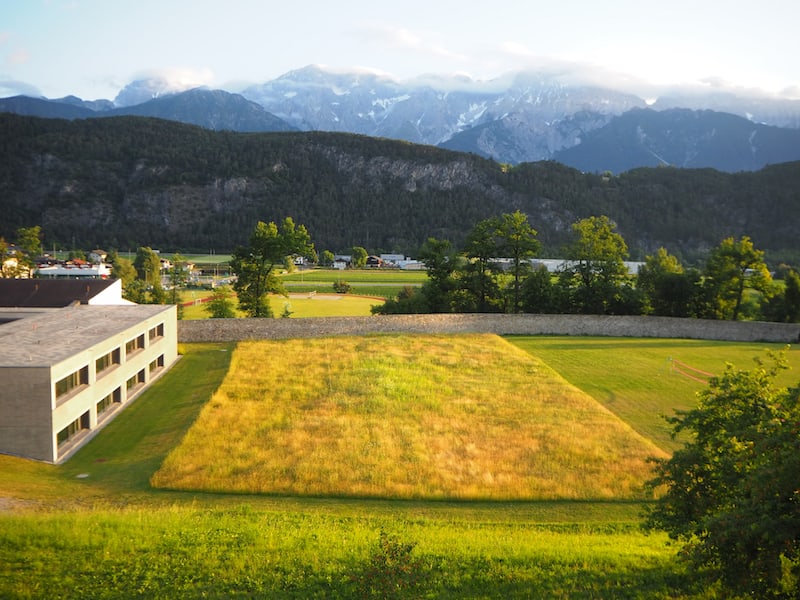
In the morning, the Inntal valley greets me to this view from my room. What a beautiful place, don’t you think?
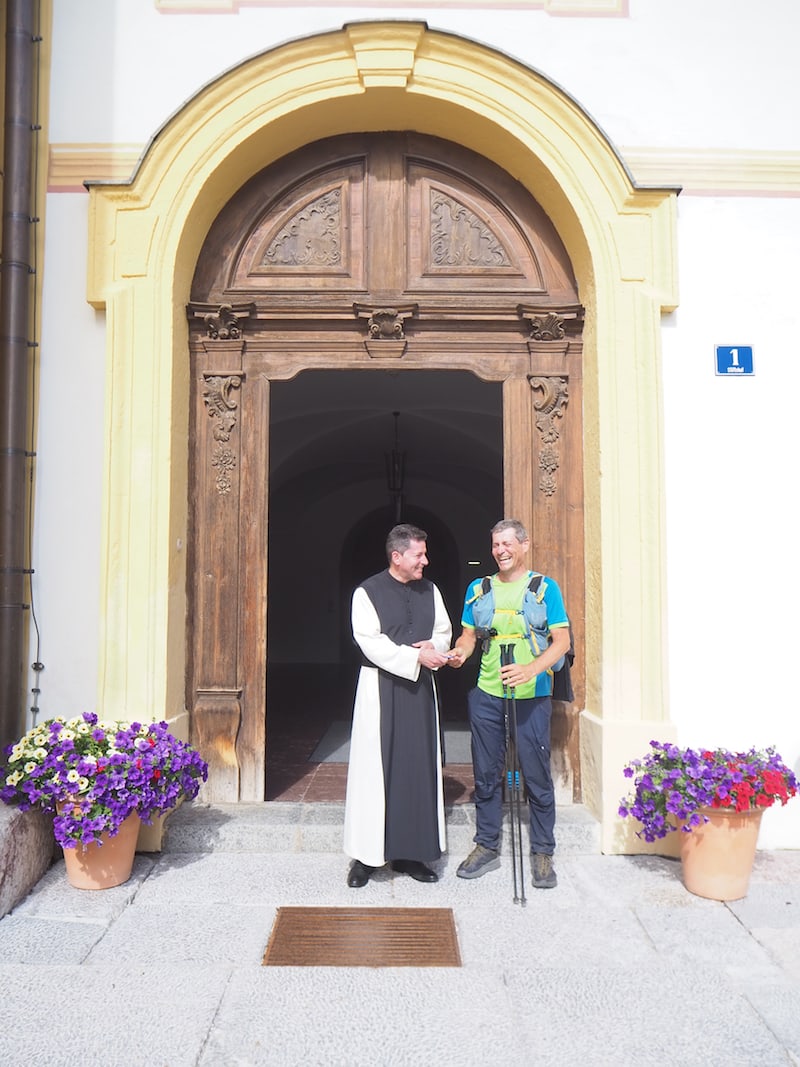
Pilgrims, too, are always welcome at Stams Abbey! Here, you can see Frater Lukas welcoming Jörg from Styria, who shares his personal story of pilgrimage with us. If you want to come and stay as a pilgrim, please call at least a day in advance.
Abbey Baker & Patron of Bees: Meeting and greeting Father Franz and Father Norbert.
As guests at Stams Abbey, we learn that some monks within the Cistercian community are engaged in very practical, even tasty activities! Father Franz, for example, always “turns night into day”: his working hours begin well after Compline (the last, common choral prayer of the Cistercian monks to mark the end of the day) and end “sometimes not until half past three in the morning – whenever major events are scheduled”, he laughs. We visit Father Franz in his monastic bakery, which he has equipped with bread ovens, dough machines and other handy tools by virtue of his expertise.
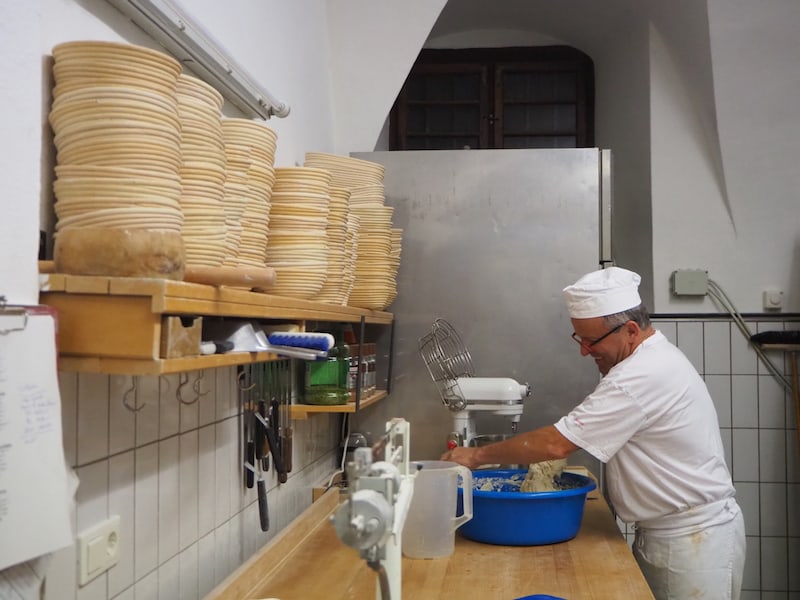
Father Franz bakes “everything except bread rolls”. He explains his many tasks during our visit to his bakery in the cellar of the monastery. The bread served during breakfast tastes twice as good after our visit with him!
Father Norbert, on the other hand, only really comes alive in the bee and herb garden. When we meet him out there for a chat, he appears to be at least two decades younger and goes on and on about what his bees and plants are up to. It is wonderfully refreshing to listen to him and breathe in the scent of the many herbs and medicinal plants he has given a home here. In the midst of it all: “his bees”! Only a small part of their honey goes to the monks themselves (and even this only on special occasions). Father Norbert feeds a good part of the honey, which must be delicious, to the bees themselves – such is his love and care for them!
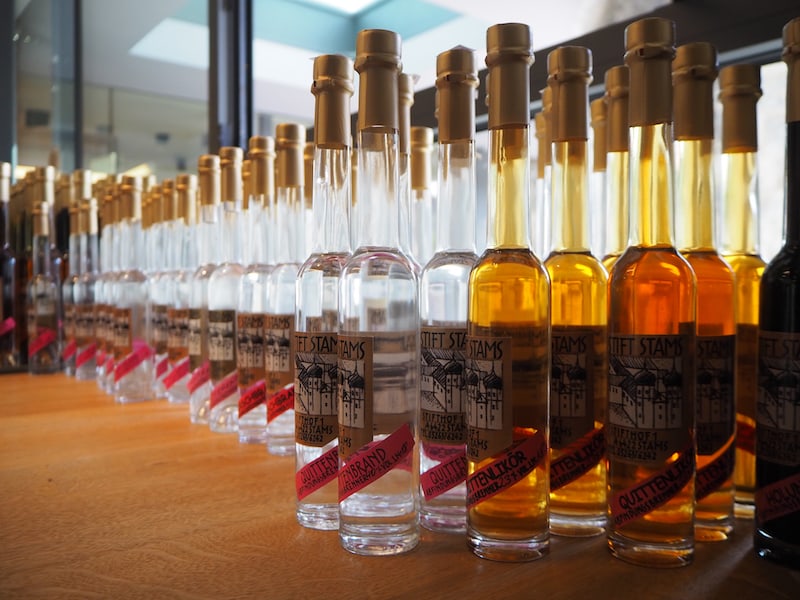
You may taste further produce made at the abbey in the monastery shop, such as liqueurs or brandies.
If you come here as a gourmet traveller, don’t miss tasting the abbey’s fresh fish as well as some fine white wines, too.
The first day of our stay at Stams Abbey offers at least two surprises. First is a meeting with a young, dynamic couple who call themselves “Black Fishers Stams”: Fabio and Maria, chef and marketing expert, are tenants of over 6,000 protégés in the Stams Abbey ponds. The variety of fish grown here include rainbow or salmon trout as well as sturgeon or char. Fabio and his wife are determined to “make something really great” out of the site at the foot of the mighty abbey complex. Not just a fishing centre or a snack bar, but a bit more: Why not, for example, try some fresh ice cream served in a fish wafer baked especially for you?
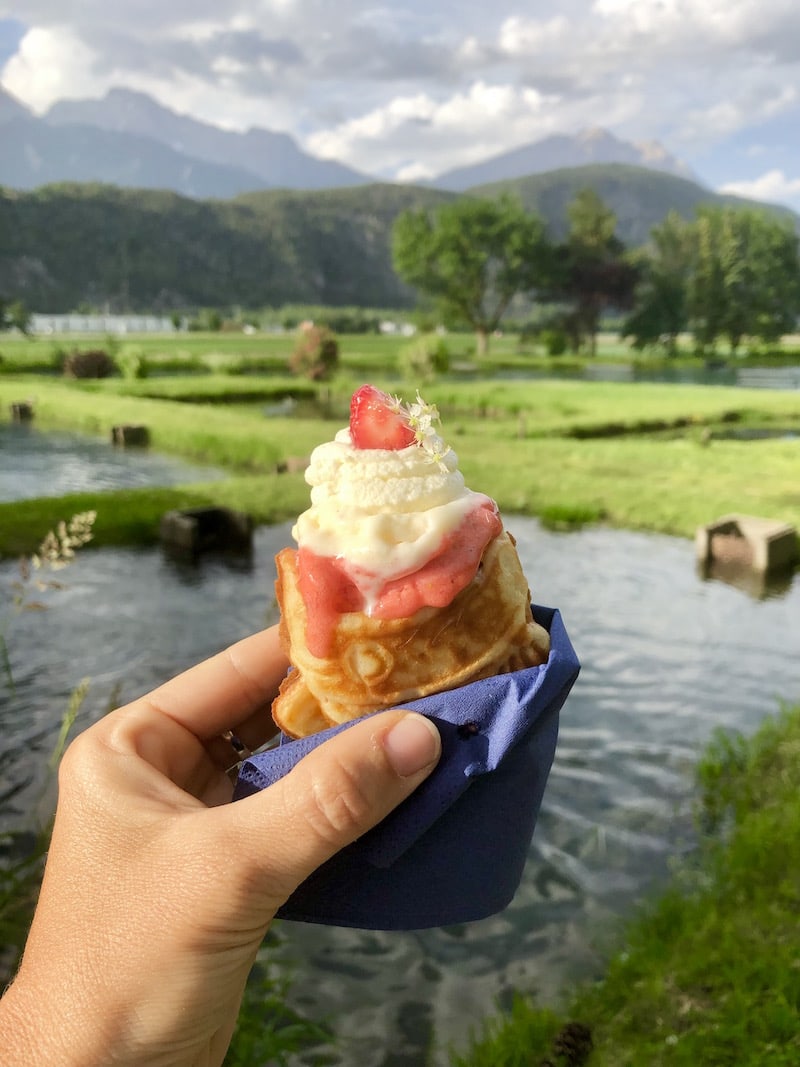
I love my summer ice cream served in a waffle pressed to look like a fish. The couple took on the idea from Korea.
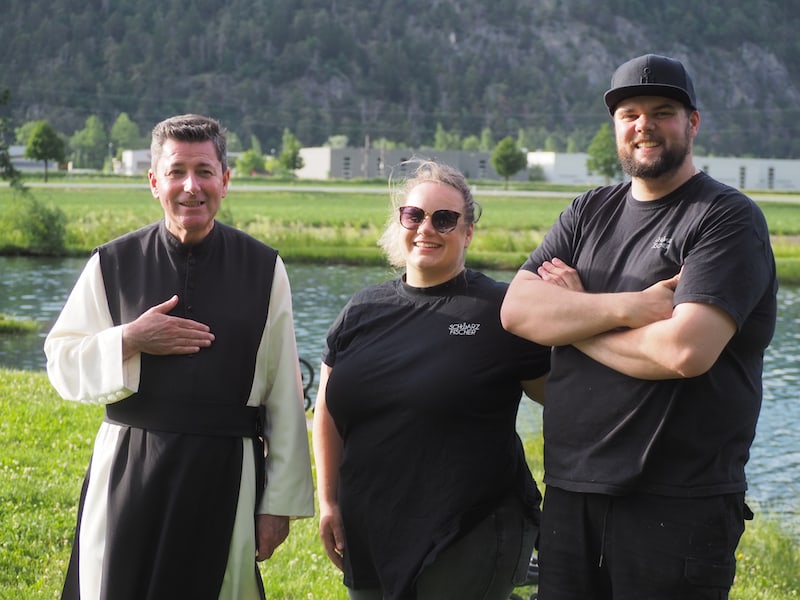
… Frater Lukas introduces us to Maria and Fabio, who are tenants of the fish business belonging to Stams Abbey.
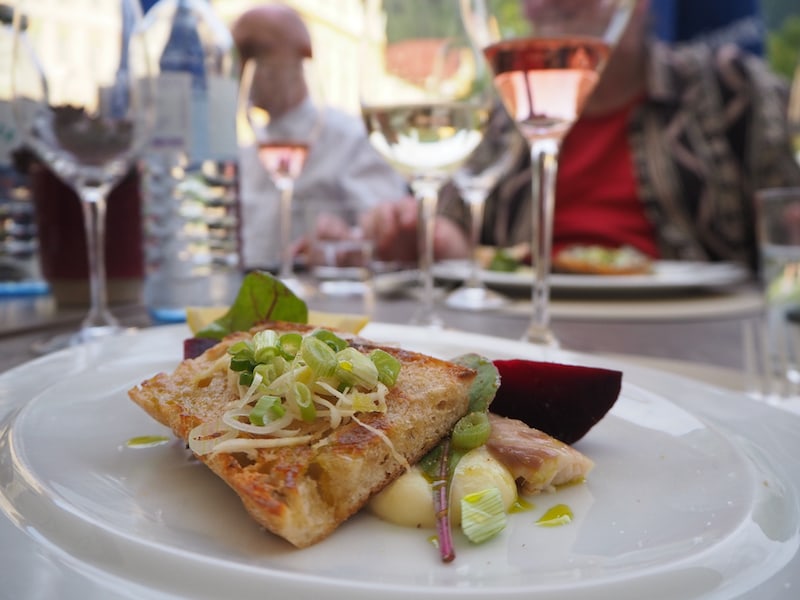
Further up, the former orangery of the abbey turned restaurant now serves us the local fish varieties …
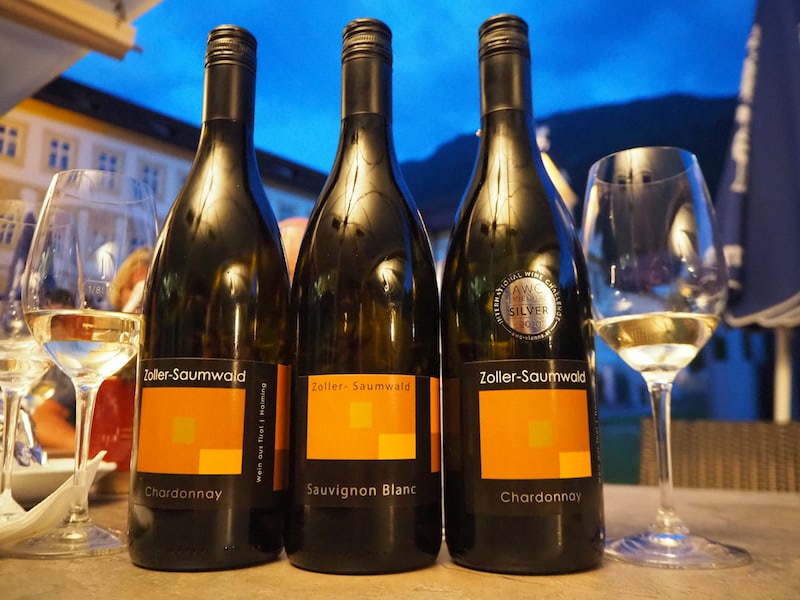
… joined by a selection of fine white wines from Tyrol: Do check out Peter Zoller’s Sauvignon Blanc. Really good!
Last but not least, let me tell you a little bit more about the history of Stams Abbey.
Stams Abbey was founded in 1273 by Count Meinhard the Second, Duke of Tyrol, with the help of his wife Elisabeth, who were looking for a burial place for themselves and their family. Cistercian monks from Bavaria came and built a first wooden monastery above the present chapel in the late 12th century. They also built the first three-nave Romanesque church there. Today, Stams Abbey is made up almost entirely of early Baroque and Rococo styles. Traces of the Romanesque and Gothic styles are only sparsely present.
What many people don’t know is that Stams Abbey owns the second largest Dürer collection in the world after the Albertina Museum in Vienna, consisting of copper and wood engravings by the famous painter Albrecht Dürer. These came to Stams Abbey through a personal friendship between Albrecht Dürer and Emperor Maximilian the First; the latter often coming to Stams for hunting. Today, the collection is housed in the art depot of the province of Tyrol near Innsbruck. Wow!
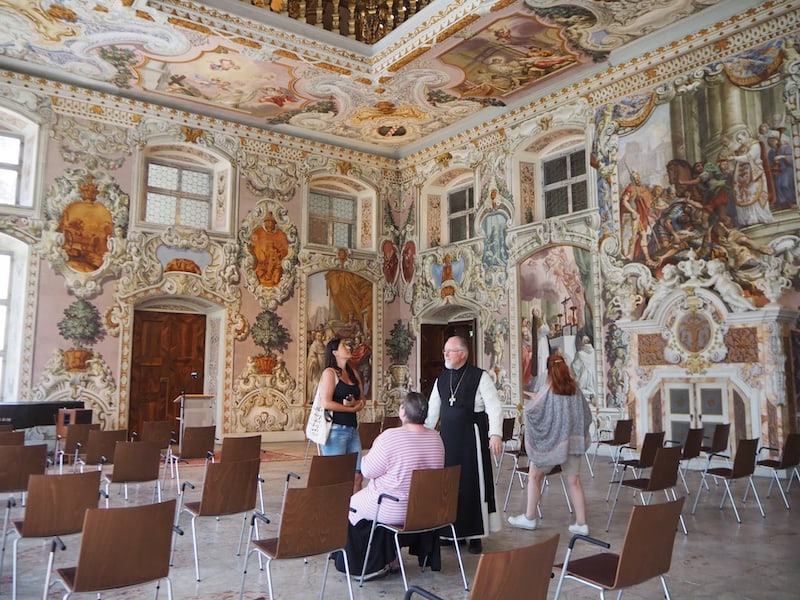
When visiting Stams Abbey, make sure you check out the famous Bernardi hall, just opposite the abbey museum.
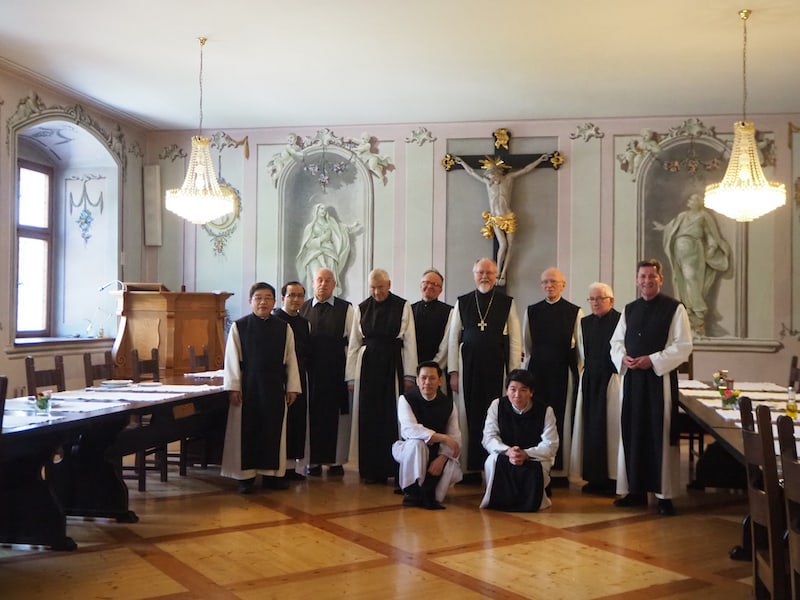
I’ve especially enjoyed being welcomed among the community of Cistercian monks for lunch one day! There are several guest monks here from Vietnam, who might end up staying at Stams Abbey.
Check out all of my travel pictures from visiting Stams Abbey here:
Disclaimer: We have been invited by the Austrian Association of Monasteries, Abbeys & Convents “Klösterreich” on this trip to Stams Abbey in Tyrol. All opinions are my own.
